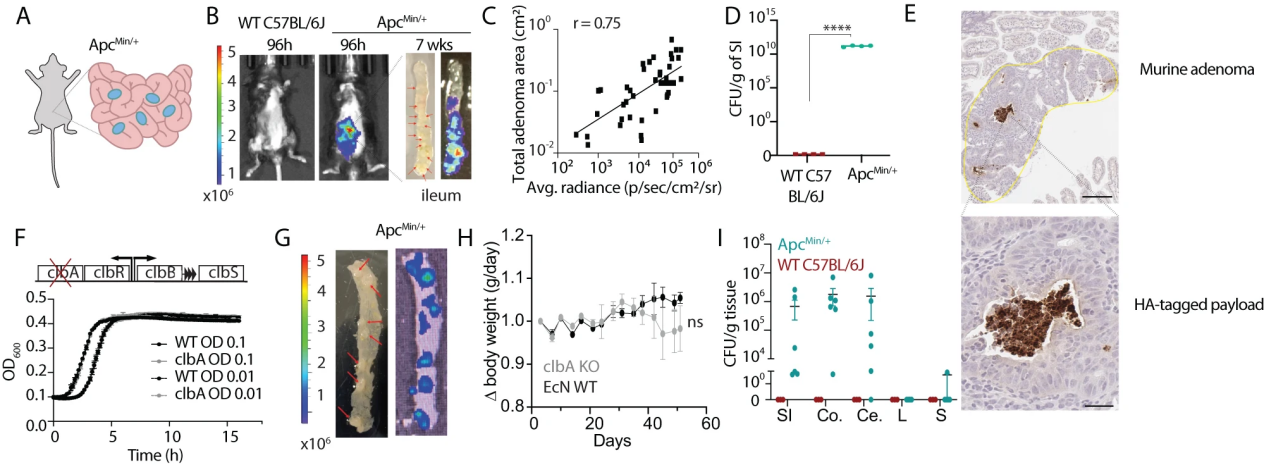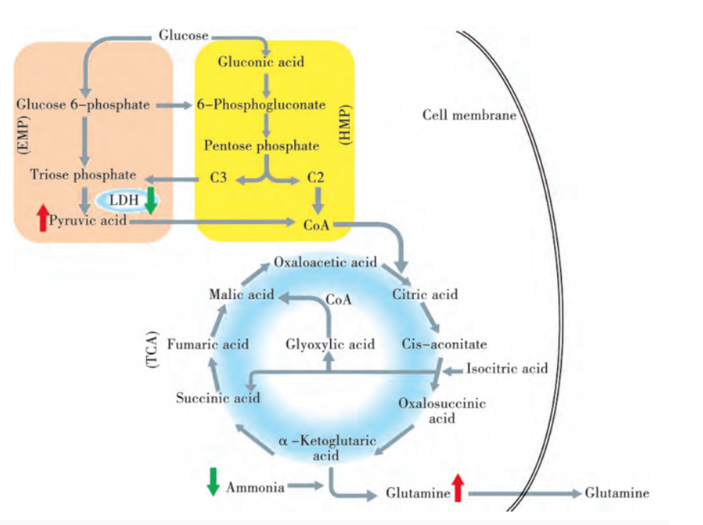
Theodor Escherich, an outstanding physician and scientist of the 19th century, was one of the earliest scientists to explore microorganisms. He founded the field of intestinal pathology and associated his name with the name Escherichia coli, which was discovered and named in 1885. From then on, the “E.coli clan” was endowed with the fate of being “selected laborers”.

Theodor Escherich (1857-1911)
In 1885, while attempting to identify the pathogen of cholera, Escherichia coli was accidentally isolated by Escherichia coli; Today, 138 years later, the E.coli family has a large number of family members. Overall, the commonly used Escherichia coli strains in the laboratory today come from two separate isolates, namely K-12 strain and B strain.
The K-12 strain was isolated from the feces of a diphtheria patient in 1922 and preserved in the bacterial library of the Department of Bacteriology and Experimental Pathology at Stanford University in 1925; Common laboratory strain MG1655 (wild-type K-12 strain) and its derivative strain DH5 α Both DH10B and DH10B (also known as TOP10) are members of the K-12 family.
The history of strain B is quite complex, and it is likely that it was isolated in 1918, but it was not until 1942 that it was first referred to as strain B. BL21 strain and its derivative strains, such as BL21 (DE3), are the most common “offspring” of Escherichia coli strain B. So the question is, what are the different uses of the K-12 and B strains as “workers” in the laboratory?
There are only two types of bacteria, One type is Escherichia coli, Another type is not
“There are only two types of bacteria, which is a universally recognized truth. One is Escherichia coli, and the other is not. Anything that Escherichia coli does is a universal truth about bacteria,” J Allan Downie and J. Peter W. Young openly wrote in Nature.
In the 1940s, due to the outstanding performance of Escherichia coli in many basic studies, it became the preferred model organism (biologists conducted scientific research on selected biological species to reveal a universal phenomenon of life, and these selected biological species were model organisms such as peas, fruit flies, mice, etc.); This research boom saw a surge in development at the beginning of the molecular biology revolution in the 1950s. The result is obvious, as it became the first organism to break through the basic theories of life (including genetic code, transcription, translation, and replication), and countless Nobel Prizes have been branded with E. coli.
The resulting knowledge and molecular biology methods used to manipulate its genes have made Escherichia coli shine in genetic engineering, drug production, and laboratory microbial evolution. It is not an exaggeration to say that Escherichia coli is now one of the most important model organisms in biological research. Behind all the coincidences is the inevitable driving force, why is it Escherichia coli? Why do scientists unanimously choose Escherichia coli?
Nobel laureate and French scientist Jacques Monod once said, “What applies to E. coli also applies to elephants.” Although his statement may be exaggerated, it may be the best summary for us to understand the contribution of E. coli to life sciences. All living organisms operate in a similar way, whether they are bacteria or elephants. The difference is that humans and other advanced organisms are typically composed of trillions of cells that work together, while Escherichia coli belongs to single-celled organisms. Therefore, it is more convenient to study biological processes that are difficult to operate in humans or animals in Escherichia coli.
The reason why scientists often refer to Escherichia coli as a “model organism” is because it provides an easy to study biological process model, and the fundamental molecular basis that drives these biological processes is shared by organisms. Meanwhile, compared to other model organisms, Escherichia coli has a faster growth rate and lower cultivation cost. It not only eats less, but also does more work, which is not suitable for “natural selection of workers”. In addition, Escherichia coli has been used as a model organism for over 60 years, with clear genetic information that allows scientists to manipulate genes as they please (delete, replace, mutate, integrate).
Related Products
| Category | Subcategory | Product Name | Catalog Number | Price |
|---|---|---|---|---|
| Genome Editing | CRISPR Tools | Cas9-NLS | GE0001 | Online Inquiry |
| Genome Editing | CRISPR Tools | CD® Cas12a | GE0002 | Online Inquiry |
| Genome Editing | CRISPR Tools | CD® Cas9 Nickase | GE0003 | Online Inquiry |
| Genome Editing | CRISPR Tools | CD® Cas9 Nuclease | GE0004 | Online Inquiry |
| Genome Editing | CRISPR Tools | CRISPR Nuclease mRNA | GE0005 | Online Inquiry |
| Genome Editing | CRISPR Tools | gRNA Synthesis Kit | GE0006 | Online Inquiry |
| Genome Editing | CRISPR Tools | Monarch RNA Cleanup Kit | GE0007 | Online Inquiry |
| Genome Editing | CRISPR Tools | sgRNA Synthesis Kit | GE0008 | Online Inquiry |
| Genome Editing | CRISPR Tools | SNAP-tagged dCas9 | GE0009 | Online Inquiry |
| Genome Editing | CRISPR Tools | Staphylococcus aureus Cas9 | GE0010 | Online Inquiry |
| Genome Editing | Gene Assembly | High-Fidelity DNA Assembly Master Mix | GE0012 | Online Inquiry |
| Genome Editing | Genome Editing Detection Tools | Genomic Cleavage Detection Kit | GE0013 | Online Inquiry |
Synthetic Biology and Escherichia coli
The recombinant DNA technology developed in the 1970s opened the door to molecular biology research based on Escherichia coli.
In 2000, the first genetic switching switch and synthetic oscillation network were successfully constructed in Escherichia coli, marking the birth of an emerging discipline – synthetic biology.
Synthetic biology is a multidisciplinary research field that combines biology with chemistry, mathematics, computer science, and engineering. It uses engineering principles as a guiding principle for biological research, focusing on modifying, designing, and constructing biological systems engineering from scratch. The birth of synthetic biology further solidified the position of Escherichia coli as the “ultimate worker”. As time goes on, more and more synthetic biological elements with higher complexity, robustness, and accuracy are being developed.
In 2016, Nielsen et al. released Cello, an end-to-end computer-aided design system for constructing logic circuits in Escherichia coli, successfully achieving the “Flag” established at the beginning of synthetic biology – standardized, characterized, and automated design.
In 2013, the emergence of the CRISPR Cas (Clustered Regularly Spaced Short Palindron Repeats and Related Proteins) family and the revolutionary genome editing technology that emerged with it pushed synthetic biology to a climax, greatly promoting the design of gene pathways and truly achieving “creation knowledge” and “creation for use” in synthetic biology.
Workers also have a day off work
The highly suitable genetic manipulation tools, diverse genetic manipulation tools, and comprehensive genomic information make Escherichia coli widely used as a model biological system for genetic component assembly, gene expression regulation, pathway construction, and the biological manufacturing of industrial important products.
However, the application of Escherichia coli is limited, and it is not suitable for the study of all biological processes and the production of chemical substances. For example, as a prokaryote, the lack of corresponding post-translational modifications sometimes makes it difficult to express proteins in eukaryotes. Moreover, scientific research has evolved from simple genetic mutations to the insertion of well-designed complex synthetic circuits and the construction of a fully synthetic genome. Escherichia coli is no longer the optimal host for increasingly complex genetic designs. In other words, “day selected workers” will also face retirement in areas they are not good at.
“We use Escherichia coli only because we know it best,” said Harvard geneticist Henry Lee. He collaborated with George Church to discover Vibrio natriegens, a bacterium that can double its amplification in just 10 minutes under optimal conditions (Escherichia coli takes about 20 minutes). During his academic career in genome research, Lee often felt frustrated by the lengthy process of bacterial cultivation. Therefore, he hoped to replace the laboratory’s main force, Escherichia coli, with this currently known fastest growing bacterium in the world to complete his research faster.
Similarly, with the emergence of more and more precise gene/genome manipulation tools targeting different species, chassis capable of carrying newly designed biological functions are gradually emerging. In addition to Escherichia coli, Bacillus subtilis and Corynebacterium glutamicum, as well as brewing yeast – as eukaryotes, can provide better secretion pathways and post-translational modifications.
But on vacation? What kind of vacation is it? Only strains that are not useful to the laboratory will be on vacation! In today’s world where various chassis organisms are flourishing, Escherichia coli remains the mainstay of many laboratories, and the “last dance” of Escherichia coli continues – even if one wants to use more complex life systems, Escherichia coli is an undeniable beachhead and a touchstone for testing whether genetic design is reasonable and whether it can be further promoted to more complex hosts.









